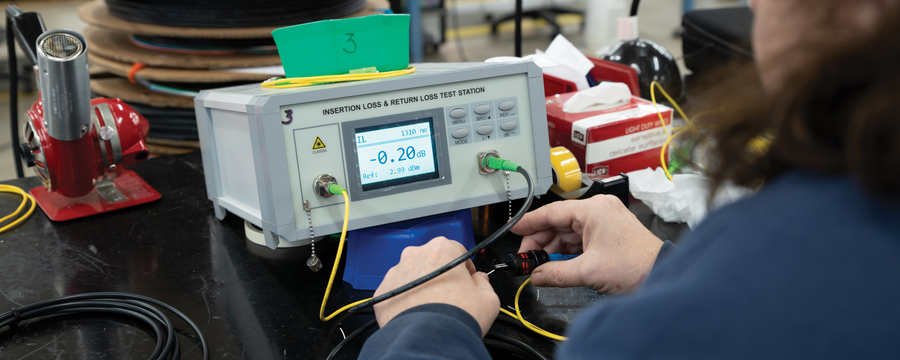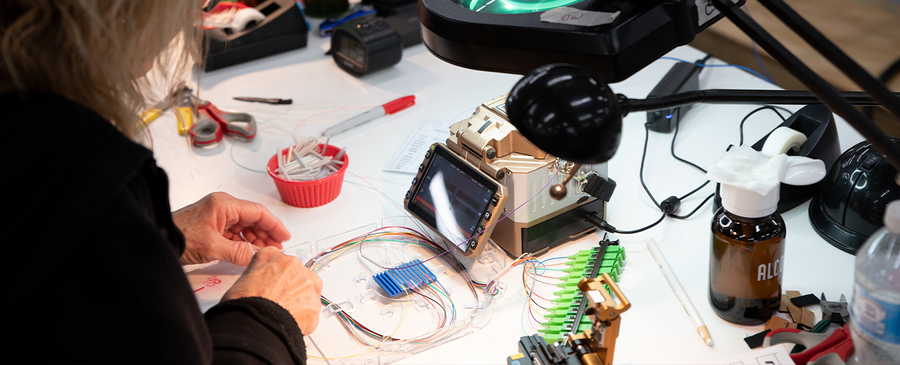{{ quickViewProduct.product_title }}
Stock ID
{{ quickViewProduct.product_stock_number }}
Product Features:
- {{ feature.product_feature_description }}
{{ option.product_option_title }}
{{ value.product_option_value_title }}

At Multilink, many of our original products and ideas get left on the cutting room floor during pre-production, and that’s perfectly fine with us. Because the more difficulties we experience, the more we end up learning, and the more we learn, the better-quality product we can provide to you.
According to our Quality Assurance Manager Drew Kaplan, “Quality is exceeding the needs and expectation of the customer through standardization and control of the process.” Integral to surpassing these needs are three factors that have to work together to make a product appealing: price, time and quality.
These three factors can be applied to any industry, but Multilink’s products succeed because we control the relationship between them.
“We could have the greatest product in the world and it’s the best quality, but it could be very expensive and no one would buy it,” Drew says. “Same thing with time. Greatest product ever, but it takes you 12 weeks to make it because it’s got so much quality built into it. Or you could have the worst product in the world, but it’s cheap and can be produced quickly.”
Our Fiber Tap Plus subscriber terminal is the perfect balance of price, production time and quality. They allow you to save money by installing your own pre-terminated fiber, have streamlined designs that don't take long to produce and are protected from environmental damage with hardened connectors.
Multilink’s product fidelity system is based on the International Standards Organization’s (ISO) 9001 quality assurance standards. ISO 9001 are industry standard specifications that ensure we meet customer specifications in terms of durability and materials used.
As you can tell, there is a lot we consider when we assess our products. We manage this by consistently reviewing and re-reviewing products during the pre-production process. Our successs in the industry can be largely attributed to the fact that we take customers' feedback seriously.
“In the development phase, we communicate directly with the customer to make sure the product is being built to their desires,” Drew says. “We like to take an agile approach to production, which means we base everything on the finished prototype we created during initial development, so it’s still manufactured the same way it was designed.”
Drew likens Multilink's quality dynamic to the recently-released film Ford v. Ferrari, which highlights the difference between the two car manufacturers. Ferrari is successful because their luxury vehicles are sleek, fast and the best in class. Ford, on the other hand, makes more accesible vehicles, but were more successful than their Italian competitor by standardizing the vehicle production process, making their cars less expensive.
Multilink's products represent the best possible combination of these two traits. Our items feature intuitive and groundbreaking designs, but standardizing construction where possible keeps them affordable. It's about finding the middle point where you can get the best of both worlds, which is where customization comes into play.

Ferraris are nice cars, but they're not always feasible for the price. That doesn't mean you should accept a loss in quality, though.
Custom-made products are one of the ways that we manage the price aspect of the process. By giving customers the ability to include only the components they absolutely need and removing the ones they don’t, we help them mitigate the costs of their orders.
Don’t see what you're looking for in our current lineup? We’ll work directly with you to configure any of our goods to meet your exact specifications. Our engineers and designers keep a close eye on all custom products throughout the planning, manufacturing and finishing processes.
“Every product’s different,” Drew explains. “Each has its own custom inspection sheet which reviews different parameters and specifications that are specific to that product line.”
A good example of this is one of our newest products, the Optima S16 Splice Closure. The S16 is the culmination of all the knowledge we've accrued from building fiber closures in the past. We took what we learned from building previous Optima S and T units, and designed the S16 using our updated latching mechanisms and a drop compartment with more space. Originally, the Optima 12 featured these tiny metal latches that secured the two halves of the closure together and a small drop fiber compartment. Both of these have been updated and replaced: the small latches were swapped with a big one that does a better job of keeping the closure sealed, and the original compartment with a bigger one that allows it to store more fiber.
The Optima S16 features a single large latch that provides enchanced security and protection from the elements, along with a bigger drop compartment that can store more fiber than any of our prior units.
Fiber, specifically, is often subject to wear and tear. We eliminate this issue by using insertion loss testers on every strand and providing customers with the testing reports for their assemblies, so they always know exactly how they perform in the field before they even receive them.

It's important that fiber not be compromised, so we take many steps to let customers know how theirs will perform.
Our interactive online fiber assembly configurator shows how your assemblies will look and function before we even build them, providing you with further clarity and control over our step-by-step production process. This tool is great for pitching and planning new network development projects and reduces the time it takes to order, make and ship products.
Having an overarching commitment to quality certainly isn’t easy, but revision begets improvement. "It takes a lot of additional developments over time, but that's just how it is when you're building better quality into the product." Our products can only function properly if we hold them and ourselves to high expectations, which means that some of them will be left behind. Others require small tweaks or changes, while even more need to be reworked entirely before they hit the market. And that’s okay, because at the end of the day, the more work we do, the more equipped we are to provide you with the best possible solutions.
Back to Multilog